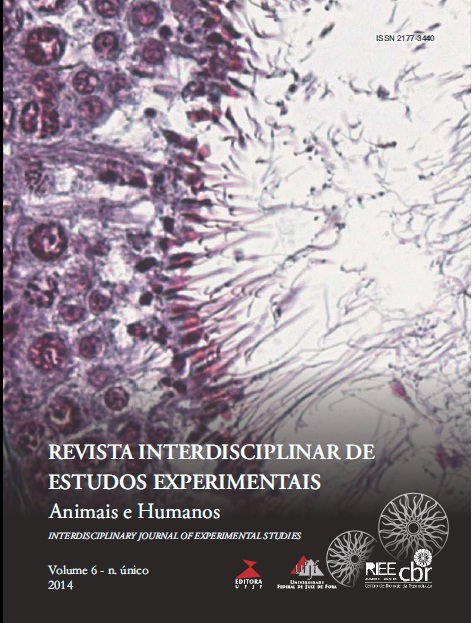Analysis of the pH var iation of three calcium hydro xide-based pastes, when associated with CMCP, chlor hexidine and Aloe vera
Keywords:
Calcium Hydroxide, Hydrogen-Ion Concentration (pH), Aloevera, Endodontics, Phytotherapy.Abstract
The objective of this study, in vitro, was to analyze the variation of the pH of threeCa(OH)2- based pastes and each of its components. There were four groups test: GI: Ca(OH)2 + propylene glycol (PG) + Aloe vera; GII: Ca(OH)2 + PG + camphorated paramonochlorophenol (CMCP); GIII: Ca(OH)2 + PG + 2% chlorhexidine and control group (distilled water). The pastes were deposited in vials containing 15 ml of distilled water and stored in a 37° C incubator. The measurement of pH was performed in 7 time intervals.The groups tested showed exponential growth of pH values recorded up to 24 h and stabilization in 14 days. The controls showed pH values lower than the other groups (p<0.05 – ANOVA). From t = 24 h, GII and GIII had higher levels of pH compared to GI (p<0.05 - Bonferroni). Subsequently, five groups were formed with the individual components of each paste: GIc - 2% chlorhexidine liquid; GIIc - PG; GIIIc - CMCP; GIVc - calcium hydroxide; GVc - Aloe vera. GIVc and GVc showed, respectively, the highest and lowest pH values recorded by the end of the experiment (12.63 and 5.54). It was concluded that the pH of Ca(OH)2 pastes may change depending on their composition, but always remained alkaline, even when associated with Aloe vera, whose acidic pH was recorded in this study. However, a higher alkalinity was presented by pastes containing chlorhexidine or CMCP in its composition.
Downloads
Downloads
Published
Issue
Section
License
Autores que publicam nesta revista concordam com os seguintes termos:- Autores mantém os direitos autorais e concedem à revista o direito de primeira publicação, com o trabalho simultaneamente licenciado sob a Creative Commons Attribution License que permitindo o compartilhamento do trabalho com reconhecimento da autoria do trabalho e publicação inicial nesta revista.
- Autores têm permissão e são estimulados a citar e distribuir seu trabalho (ex.: em repositórios institucionais, página pessoal, trabalhos científicos, etc) desde que citada a fonte (referência), já que isso pode gerar produtividade para os autores, bem como aumentar o impacto e a citação do trabalho publicado.

